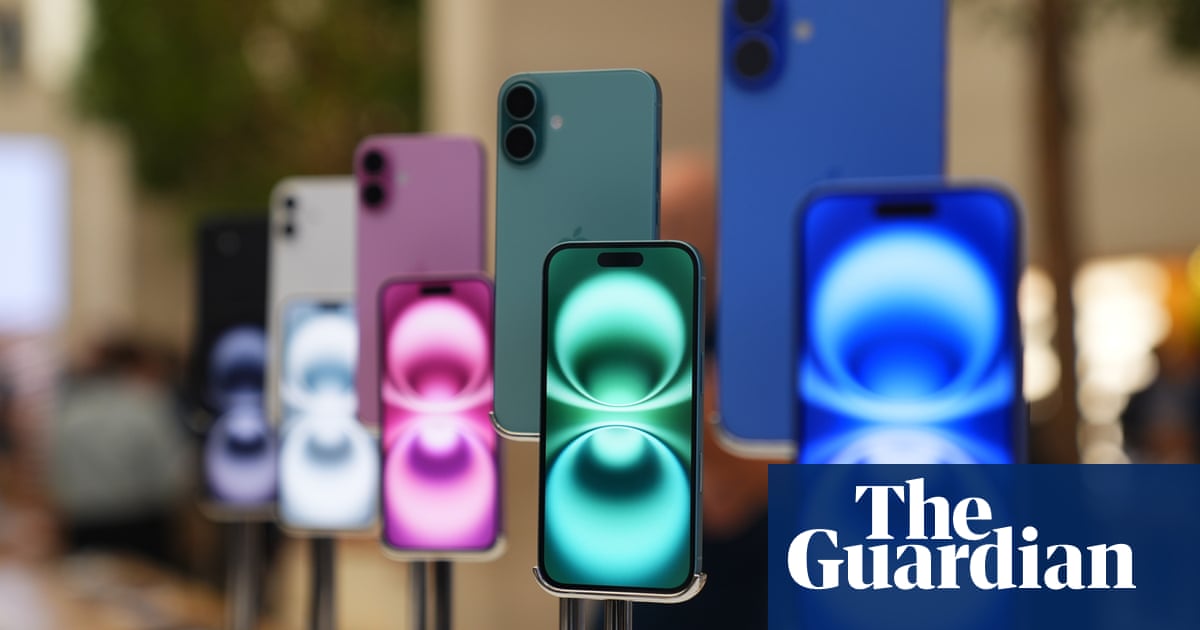Apple is reportedly planning to switch assembly of all iPhones for the US market to India as the company seeks to reduce its reliance on a Chinese manufacturing base amid Donald Trump’s trade war.
The $3tn (£2.3tn) technology company aims to make the shift as soon as next year, the Financial Timesreported.
Apple has beenswept up in Trump’s aggressive tariff policies, with the iPhone maker at one point among the biggest stock market casualties because of the prospect of its Chinese-made products being hit with a hefty import tax when they reach the US.
However, the blow was softened by a White House decision toexclude smartphonesfrom the heaviest Chinese tariffs, although Apple is still exposed to a 20% levy on all Chinese goods as part of the US president’s response to China’s role in producing Fentanyl.
The complex manufacturing process behind iPhones involves more than 1,000 components sourced from all over the world – albeit they are largely put together inChina. Apple is secretive about details of its production processes but analysts estimate that about 90% of its iPhones are assembled in the country.
According to the FT, Apple plans to source fromIndiathe more than 60m iPhones sold in the US annually by the end of 2026 – a commitment that would require more than doubling iPhone assembly in India.
Apple has already been ramping up production in India and diverting iPhones assembled in the country to the US. The company’s main Indian suppliers, Foxconn and Tata, shipped almost $2bn worth of handsets to their largest market in March asApplesought to offset the impact of looming tariffs.
It also chartered cargo flights to ferry 600 tonnes of iPhones – or as many as 1.5m devices – to the US to ensure sufficient inventory in an important market. Apple has three plants in India and last month temporarily extended operations to Sunday working at the biggestFoxconnIndia factory in Chennai.
More than 5o% of Apple’s Mac products and 80% of its iPads are assembled in China as well, according to US investment bank Evercore. Apple watches are largely built in Vietnam.
Analysts do not expect Apple to move iPhone production to the US, despite the White House insisting that the manufacturing of an American tech product willultimately return home. The US president’s press secretary, Karoline Leavitt, told reporters that Apple’s recent announcement of a $500bn investment indicated a US-made iPhone was possible.
“IfAppledidn’t think the US could do it, they probably wouldn’t have put up that big chunk of change,” she said.
However, experts have played down the prospect. Wedbush Securities, a US financial firm, said the cost of an American-made iPhone would more than treble if production was shifted to the US.
Sign up toBusiness Today
Get set for the working day – we'll point you to all the business news and analysis you need every morning
after newsletter promotion
“If consumers want a $3,500 iPhone we should make them in New Jersey or Texas or another state,” the Wedbush analyst Dan Ives said.
Fraser Johnson, a professor at Ivey business school in Canada and anApplesupply chain expert, said last month that the US economy did not have the facilities or the flexible labour to assemble iPhones.
“To train 200,000-300,000 people to come in and assemble iPhones is simply not practical,” he said.
Apple has been approached for comment.
